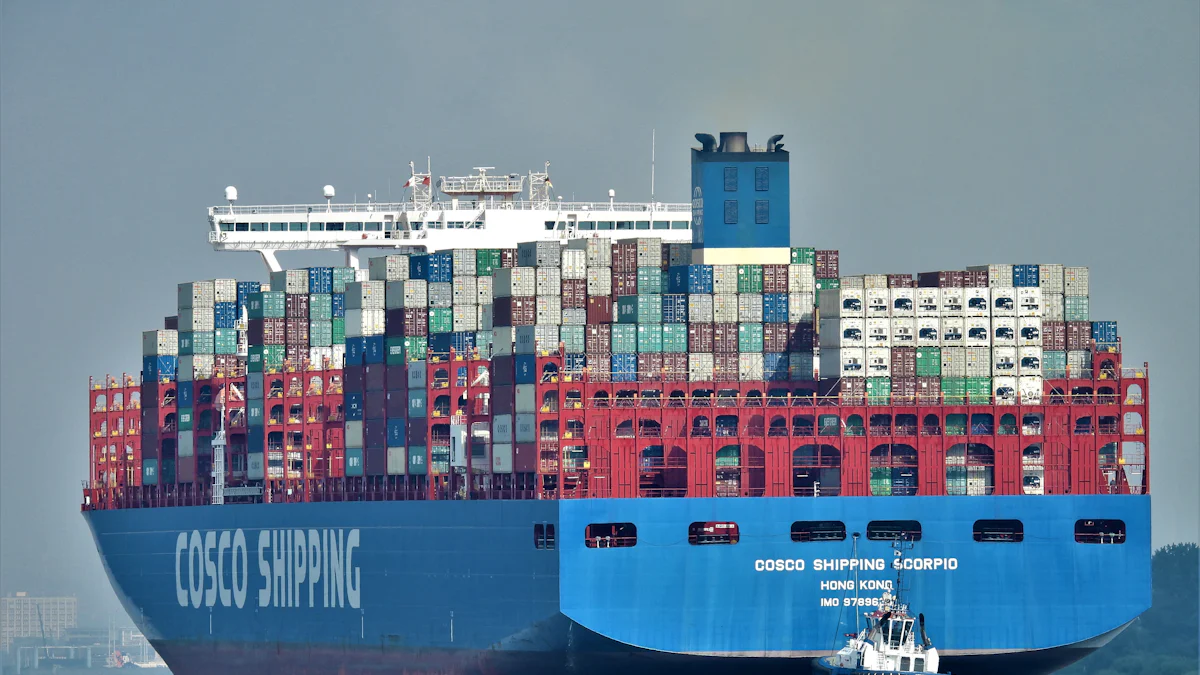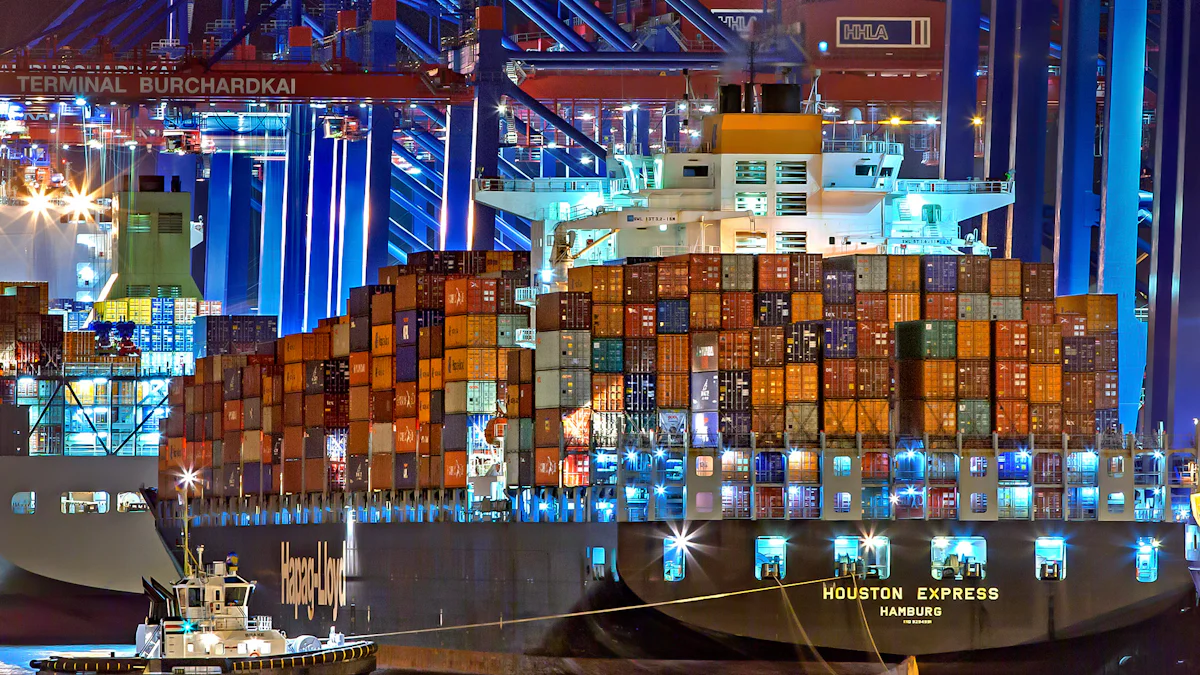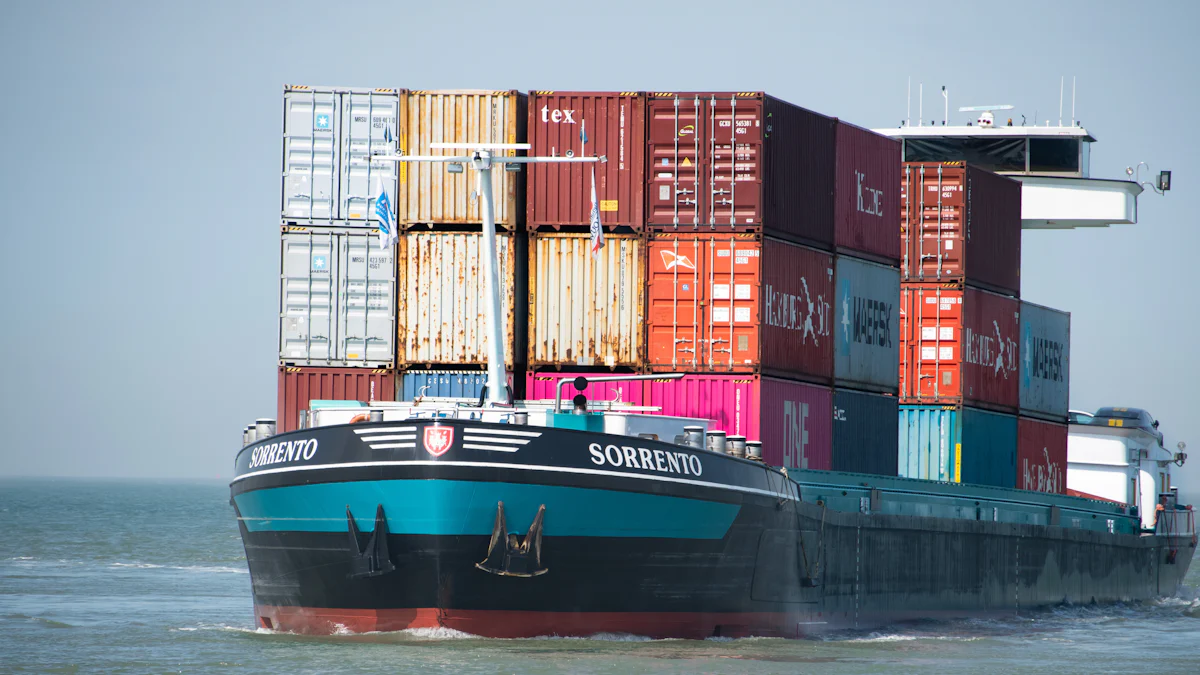Trends and Transformations in the 2024 Ocean Freight Landscape

Ocean freight plays a critical role in global trade, with approximately 90% of goods transported by sea. The industry remains dynamic, requiring constant updates to stay informed. The focus on the Ocean Freight Market in 2024 highlights key areas of change, including technological advancements and regulatory shifts.
Current Market Overview
Global Trade Patterns
Major Trade Routes
Major trade routes form the backbone of global commerce. The Transpacific route, connecting Asia to North America, remains one of the busiest. The Asia-Europe route also sees significant traffic, driven by high demand for consumer goods. The Suez Canal and the Panama Canal play crucial roles in facilitating these routes.
Not all major trade routes experience the same level of spot rate increases. For instance, the Transpacific route often faces higher rates due to congestion and high demand. In contrast, the Asia-Europe route may see more stable rates. Ocean Transport Index (OTI) for all major trade lanes increased, but the number of days varied for different routes.
Key Commodities
Key commodities transported via ocean freight include electronics, clothing, and machinery. Agricultural products like grains and fruits also rely heavily on sea transport. Energy resources such as oil and natural gas constitute a significant portion of ocean freight cargo.
Electronics from Asia dominate shipments to North America and Europe. Clothing and textiles follow closely, with major exports from countries like China and Bangladesh. Machinery and industrial equipment see steady demand, particularly in emerging markets. Agricultural products often travel from regions like South America to Europe and Asia. Energy resources, including crude oil and liquefied natural gas, are essential for global energy supply chains.
Economic Factors
Global Economic Outlook
The global economic outlook for 2024 shows mixed signals. Analysts predict a growth rate of around 5% in the first half of the year. Asia outbound lanes are expected to grow above the global average. However, challenges like geopolitical tensions and fluctuating energy prices could impact overall growth.
Global container volumes are projected to increase modestly by 3% to 4%. The maritime shipping market size is estimated to reach approximately $381.69 billion. Despite these positive indicators, potential disruptions loom on the horizon. Factors such as energy prices and geopolitical problems could create instability in the freight industry.
Impact of Inflation and Currency Fluctuations
Inflation and currency fluctuations significantly affect ocean freight. Rising inflation can increase operational costs for shipping companies. Currency fluctuations can impact the cost of goods and services in international trade.
Higher inflation rates lead to increased fuel prices and labor costs. Shipping companies may pass these costs onto consumers through higher freight rates. Currency fluctuations can make imports more expensive or cheaper, depending on the exchange rates. This volatility requires careful planning and risk management by shippers and carriers.
Regulatory Changes
Environmental Regulations
Environmental regulations continue to shape the ocean freight industry. Stricter emission standards aim to reduce the carbon footprint of maritime transport. The International Maritime Organization (IMO) enforces regulations to limit sulfur emissions from ships.
Shipping companies invest in cleaner technologies to comply with these standards. The adoption of low-sulfur fuels and advanced exhaust cleaning systems becomes more common. Environmental regulations also encourage the development of alternative energy sources, such as liquefied natural gas (LNG) and hydrogen.
Trade Policies and Tariffs
Trade policies and tariffs influence the flow of goods across borders. Changes in trade agreements can either facilitate or hinder international trade. Tariffs imposed on certain goods can affect shipping volumes and routes.
Trade policies between major economies like the United States, China, and the European Union have far-reaching impacts. Tariffs on specific commodities can lead to shifts in trade routes as companies seek cost-effective alternatives. Understanding these policies helps businesses navigate the complex landscape of global trade.
Technological Advancements

Digitalization in Ocean Freight
Blockchain Technology
Blockchain technology has revolutionized the ocean freight industry. This technology ensures data integrity and transparency. Blockchain allows for accurate tracking and auditing of shipments. Every transaction gets recorded on an immutable ledger. This ledger makes information visible to all parties involved.
Smart contracts facilitate real-time payments and verifications. These contracts eliminate the need for intermediaries. This speeds up the entire shipping process. Blockchain also helps with smart bills of lading (B/Ls). These digital documents increase efficiency and security.
Internet of Things (IoT)
The Internet of Things (IoT) plays a crucial role in modernizing ocean freight. IoT devices monitor the production process in real-time. Sensors track everything from temperature to humidity. This ensures that goods remain in optimal conditions during transit.
IoT also enhances shipment tracking. Companies can monitor the exact location of cargo at any time. This reduces the chances of lost or delayed shipments. IoT data gets integrated with blockchain for added accuracy. This combination ensures reliable and transparent supply chain management.
Automation and AI
Autonomous Ships
Autonomous ships represent the future of maritime transport. These vessels operate without human intervention. Advanced sensors and navigation systems guide these ships. Autonomous ships reduce the risk of human error. This leads to safer and more efficient voyages.
These ships also lower operational costs. Fewer crew members mean reduced labor expenses. Autonomous ships can optimize fuel consumption. This makes them more environmentally friendly. The adoption of autonomous ships continues to grow in the industry.
AI in Logistics Management
Artificial Intelligence (AI) transforms logistics management in ocean freight. AI algorithms analyze vast amounts of data. This helps in predicting demand and optimizing routes. AI can identify the most efficient shipping paths. This reduces transit times and costs.
AI also improves inventory management. Predictive analytics ensure that stock levels meet demand. This minimizes the risk of overstocking or stockouts. AI-powered systems enhance decision-making processes. This leads to more streamlined and effective logistics operations.
Ocean Freight Market Forecast for 2024

Predicted Growth Areas
Emerging Markets
Emerging markets will play a crucial role in the Ocean Freight Market in 2024. Countries in Asia, Africa, and Latin America will see increased shipping activities. These regions will experience economic growth, leading to higher demand for goods. Shipping companies will focus on expanding routes to these markets. Investments in port infrastructure will improve efficiency and capacity.
Emerging markets will also benefit from trade agreements. New policies will facilitate smoother transactions and lower tariffs. This will encourage more businesses to engage in international trade. The Ocean Freight Market will see a significant boost from these developments. Companies will need to adapt to the unique challenges of these regions.
Expansion of E-commerce
E-commerce will continue to drive growth in the Ocean Freight Market. Online shopping will increase the demand for shipping services. Consumers will expect faster delivery times and better service. Shipping companies will need to optimize their operations to meet these demands. Investments in technology will enhance tracking and logistics.
E-commerce will also lead to more diverse shipping needs. Smaller shipments will become more common, requiring efficient handling. The Ocean Freight Market will see an increase in specialized services. Companies will offer tailored solutions for different types of cargo. This will create new opportunities for growth and innovation.
Challenges and Opportunities
Supply Chain Disruptions
Supply chain disruptions will pose significant challenges in 2024. Factors like natural disasters, geopolitical tensions, and pandemics will impact shipping schedules. Companies will need to develop robust contingency plans. Flexibility and adaptability will become essential for success.
Technology will play a key role in managing disruptions. Real-time data and analytics will help companies make informed decisions. Advanced tracking systems will provide better visibility into supply chains. Collaboration between stakeholders will improve response times and minimize delays. The Ocean Freight Market will need to invest in these solutions to stay resilient.
Sustainability Initiatives
Sustainability initiatives will shape the future of the Ocean Freight Market. Environmental concerns will drive the adoption of greener technologies. Shipping companies will invest in cleaner fuels and energy-efficient vessels. Regulations will enforce stricter emission standards, pushing the industry towards sustainability.
Sustainability will also create new business opportunities. Companies that prioritize eco-friendly practices will attract more customers. Green certifications will become a valuable asset in the market. The Ocean Freight Market will see a shift towards more sustainable operations. This will benefit both the environment and the industry in the long run.
Comparative Analysis
Changes from Previous Years
Market Growth Trends
The Ocean Freight Market saw significant changes in growth trends over recent years. In 2024, analysts predict a modest increase in global container volumes by 3% to 4%. This growth contrasts with the rapid expansion seen during the pandemic years. The market size is estimated to reach approximately $381.69 billion, reflecting steady but cautious optimism.
Emerging markets, particularly in Asia, Africa, and Latin America, contribute to this growth. These regions experience economic development, leading to higher demand for shipping services. The focus on these markets marks a shift from traditional strongholds like North America and Europe. Shipping companies invest heavily in infrastructure and technology to capitalize on these opportunities.
Shifts in Trade Routes
Trade routes have also evolved. The Transpacific route remains one of the busiest, driven by high demand for consumer goods. However, congestion and rising freight rates pose challenges. The Asia-Europe route sees more stable rates, benefiting from improved infrastructure and streamlined processes.
New trade routes emerge as companies seek cost-effective alternatives. For example, the Arctic route gains attention due to melting ice caps, offering shorter transit times between Asia and Europe. Investments in port facilities along these new routes enhance their viability. The Ocean Freight Market adapts to these shifts, ensuring efficient and reliable service.
Comparison with Other Freight Modes
Air Freight
Air freight offers faster delivery times compared to ocean freight. However, it comes at a higher cost. This mode suits high-value or time-sensitive goods. The Ocean Freight Market, on the other hand, provides a cost-effective solution for bulk shipments. Companies often choose air freight for electronics, pharmaceuticals, and perishable items.
Despite the speed advantage, air freight faces limitations in capacity and environmental impact. The carbon footprint of air transport is significantly higher than that of ocean freight. As sustainability becomes a priority, companies may opt for greener alternatives. The Ocean Freight Market benefits from this shift, offering eco-friendly options like low-sulfur fuels and energy-efficient vessels.
Rail and Road Freight
Rail and road freight play crucial roles in the supply chain. Rail freight offers a balance between cost and speed, making it ideal for long-distance inland transport. Road freight provides flexibility and access to remote areas. However, both modes face challenges like infrastructure limitations and traffic congestion.
The Ocean Freight Market complements these modes by handling large volumes of cargo over long distances. Ports act as hubs, connecting ocean freight with rail and road networks. This intermodal approach ensures seamless transportation from origin to destination. Companies leverage the strengths of each mode to optimize their logistics strategies.
The Ocean Freight Market in 2024 will witness significant trends and transformations. Key areas include technological integration, supply chain resilience, and sustainability initiatives. Stakeholders must invest in smart shipping solutions and blockchain technology. Enhancing supply chain resilience through reshoring and nearshoring will be crucial. Adopting green shipping technologies and alternative fuels will drive the industry forward.
Adapting to these changes is essential for success. Embracing technology and staying flexible will position businesses for growth. The future outlook for the Ocean Freight Market remains promising, with opportunities for innovation and efficiency.
See Also
Revealing the Latest in Sea Freight Logistics for 2024
Understanding the Influence: Trends in Logistics Risks
Enhancing Supply Chain Productivity: 5 Key Trends
Ready for the Future? Investigating the Newest Transport Tech for Supply Chains
The Outlook for Less Than Truckload Freight: An In-Depth Review
